Put these in order from smallest to largest:
Solar System Galaxy Planet Universe
Planet, Solar System, Galaxy, Universe
These kinds of celestial bodies are thought to originate from two different places. Some are long-period and originate in the Oort Cloud and some short-period and originate from the Kuiper Belt in our solar system.
Comets
What is one important reason that our sister planet, Venus, cannot support life?
A) Venus has no atmosphere.
B) Venus' surface temperature is about -380 degrees Celsius.
C) The water on Venus' surface is too hot to support life.
D) Venus’ dense clouds keep the planet’s temperature very High
D - Venus' atmosphere is made up of 96.5 % Carbon Dioxide, a greenhouse gas. This traps heat in the atmosphere making the temperatures the hottest of all the planets in our solar system.
What famous astronomer discovered gravity, the attraction between objects? It's called The Law of Universal Gravitation.
Isaac Newton
A day and night on earth is 24 hours. During this time earth has __________ once?
Rotated
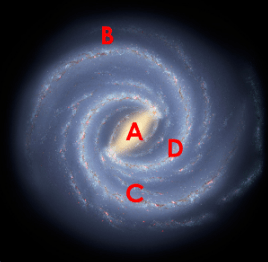
Where is our solar system in the Milky Way galaxy?
C
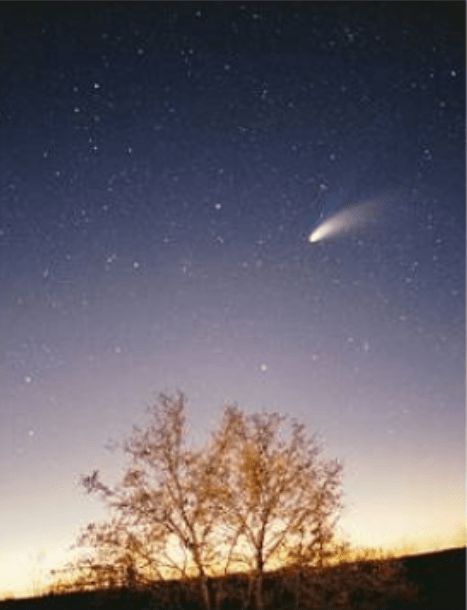
The image in the picture is:
A. A comet
B. A meteoroid.
C. A Star
D. An Asteroid
A Comet
If a planet's distance from the sun tripled, what would happen?
A. The planet’s mass would be doubled.
B. The planet’s year length would be longer.
C. The planet's day length would be shorter.
D. The planet’s orbital period would become shorter.
B - The planets year length would be longer
Almost everything in the universe orbits around a central object. EX: The planets orbit the sun. The force most responsible for these orbits is?
Gravity
A planets orbital path around the sun is considered a revolution? How much time do we humans call this?
A year.
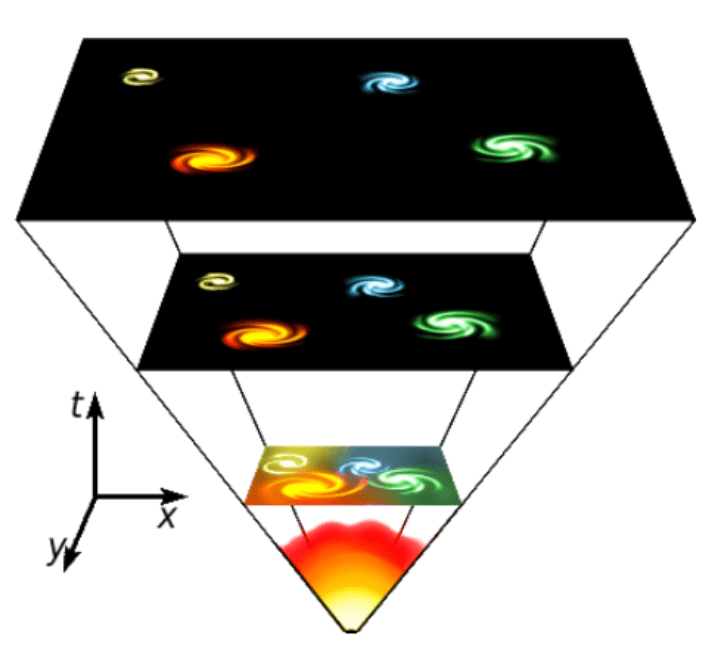 What did Hubble discover about the universe when he discovered millions of other galaxies? hint: think about the the Big Balloon activity we did in class? What did you discover about the galaxies?
What did Hubble discover about the universe when he discovered millions of other galaxies? hint: think about the the Big Balloon activity we did in class? What did you discover about the galaxies?
The universe is expanding and the galaxies are moving away from each other.
These objects are smaller than planets and orbit between Mars and Jupiter?
Asteroids
How many Astronomical units is the Earth from the sun?
1 AU
The early astronomers believed that our solar system was the universe. Later, Copernicus introduced the Heliocentric theory which proposed that the Sun was the center of the universe. It wasn't until the 1920's that this scientist discovered other galaxies beyond our Milky Way galaxy. Who is this scientist? Hint: He also designed a powerful telescope that is still used today.
Edwin Hubble
True or false: The inner planets have shorter days than the outer planets?
False. The outer planets spin faster and have shorter days.
Which theory of the universe proposed that earth was in the center of the universe and was stationary
Geocentric
These objects travel and orbit the sun. They are called short period comets. Where do these comets travel from?
Kuiper Belt
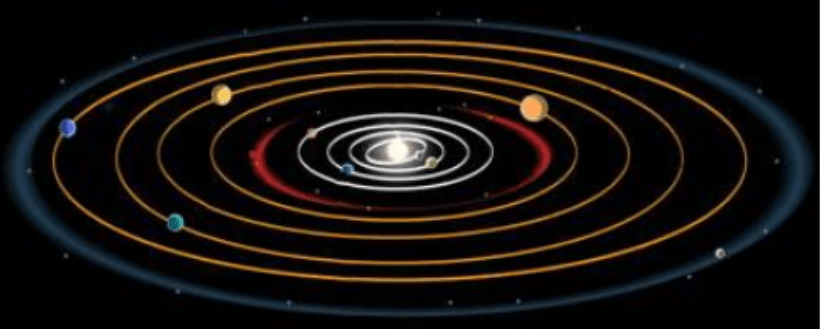 In this illustration, the rings around the sun represent?
In this illustration, the rings around the sun represent?
The orbital paths of the planets
The Space Station is outside of Earth's gravitational pull. Astronauts in the space station experience weightlessness and float. They are actually in _ _ _ _ _ _ _ _.
Free Fall
Involves equations of circular motion?
Is it Rotation, Revolution, or both?
Both are circular motions
Which Famous Astronomer introduce the theory that the Earth was in the center of the universe and the sun and planets revolved around it?
Ptolemy
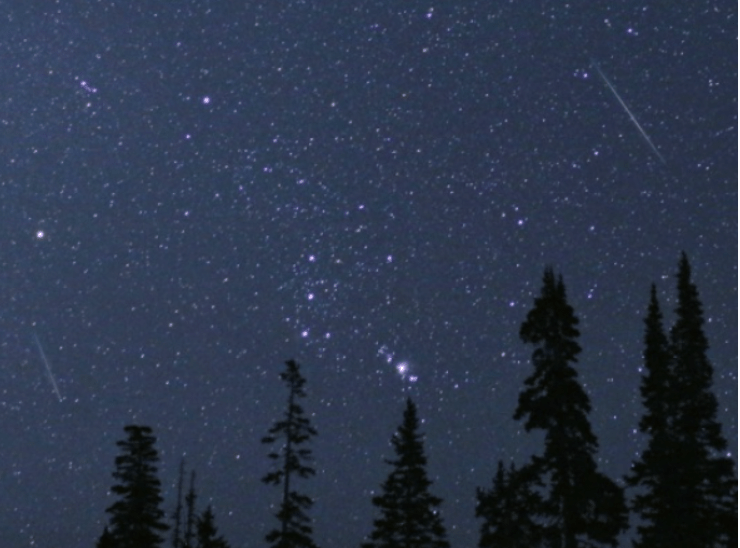 A small body starts its life as a _______ floating through space between the planets until it makes a bright streak of light in Earth’s atmosphere as a _______ and then, if it isn’t consumed by frictional heating, finally lands on the ground as a ________.
A small body starts its life as a _______ floating through space between the planets until it makes a bright streak of light in Earth’s atmosphere as a _______ and then, if it isn’t consumed by frictional heating, finally lands on the ground as a ________.
Fill in the blanks to correctly identify the relationship between meteors, meteorites, and meteoroids.
Meteoroids, meteors, meteorites
A day on this planet is longer than a year. So it spins/rotates slower than completing one revolution (year) around the sun.
Venus
Gravity and Inertia work together to keep planets in an oval orbit around the sun. The path of an object moving through space is called? Hint: starts with a T
Trajectory
Does the Earth rotate faster or revolve faster in space?
It REVOLVES faster at 30 km/s
Rotates just 0.5 km/s